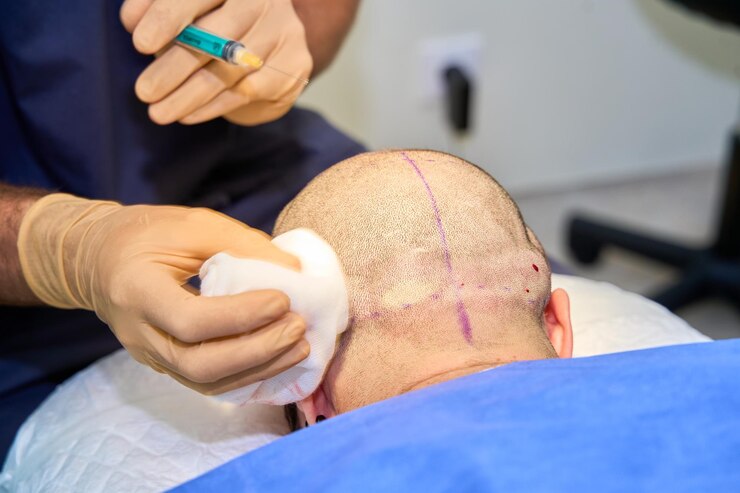Does a Hair Transplant Leave Noticeable Scars?

Hair loss is a common concern for many individuals around the world. Whether it’s due to aging, genetics, hormonal changes, or medical conditions, thinning hair or bald patches can take a toll on a person’s self-esteem. To address this, hair transplant surgeries have gained widespread popularity as an effective solution for restoring hair. Hair Transplants in Ajman and other cities have become more accessible to individuals seeking solutions for hair restoration. The key to understanding the potential for scarring lies in recognizing the differences between these methods.
Understanding Hair Transplant Surgery
Hair transplant surgery involves the relocation of hair follicles from a thicker hair-bearing area to a balding or thinning area. The primary goal of the procedure is to restore hair growth and density to areas that have experienced significant hair loss. There are two main types of hair transplant techniques: Follicular Unit Transplantation (FUT) and Follicular Unit Extraction (FUE). Both techniques have different implications when it comes to scarring.
Types of Hair Transplant Techniques and Scarring
Follicular Unit Transplantation (FUT):
In FUT, a strip of skin containing healthy hair follicles is removed from the donor area (usually the back of the head). This strip is then divided into smaller grafts, which are transplanted into the thinning or bald areas. Since the procedure involves cutting and stitching the scalp, there is an inevitable linear scar in the donor area where the strip was removed. This scar runs along the back of the head, typically hidden by the remaining hair.
Follicular Unit Extraction (FUE):
FUE is considered a more advanced technique in hair transplant surgery. Unlike FUT, FUE does not involve the removal of a strip of skin. Instead, individual hair follicles are extracted directly from the donor area using a small punch tool. These follicles are then transplanted into the recipient area. Because no large incision is made, FUE leaves tiny, circular scars that are scattered throughout the donor area. These scars are typically so small and dispersed that they are difficult to detect, even if the patient opts for a short haircut.
Factors Affecting Scar Formation
While the method of transplant plays a significant role in scarring, several other factors also influence how noticeable the scars might be. Here are some key elements that can impact scar formation after a hair transplant:
Surgeon’s Skill and Experience:
One of the most important factors in determining the outcome of a hair transplant is the skill and experience of the surgeon. An experienced surgeon will take extra care to minimize scarring during the procedure.
Scalp Elasticity and Healing:
The elasticity of your scalp and how well your skin heals will also affect the visibility of scars. Some individuals have more flexible skin that stretches and heals more smoothly, leaving minimal or no visible scarring.
Post-Operative Care:
Following the transplant, post-operative care is crucial in preventing complications that may contribute to visible scarring. Proper care includes following the surgeon's instructions for washing the scalp, avoiding sun exposure, and refraining from activities that could strain the healing skin.
Hair Density:
The density of hair in the donor area also plays a role in scarring. In FUT, if the donor area has a lot of hair, the scar will be well hidden under the remaining hair. On the other hand, in FUE, the density of the surrounding hair can help mask the tiny scars left by the extraction of individual follicles.
How to Minimize Scarring After a Hair Transplant
Although scarring is an inevitable part of most hair transplant procedures, there are several steps patients can take to minimize the visibility of scars after surgery:
Choose the Right Surgeon:
Selecting a highly skilled and experienced surgeon is the most important decision you can make to ensure the least amount of scarring. Researching your surgeon's qualifications, reviewing before-and-after photos, and seeking recommendations can help you find a professional who will provide the best results.
Conclusion
While hair transplant surgeries do leave scars, the degree of their visibility largely depends on the technique used, the skill of the surgeon, and the individual’s unique characteristics. FUE tends to leave smaller, less noticeable scars than FUT, but both methods can offer excellent results when performed by a skilled surgeon. Scarring can be minimized through proper post-operative care, choosing an experienced surgeon, and following specific guidelines to ensure the best possible outcome.
Note: IndiBlogHub features both user-submitted and editorial content. We do not verify third-party contributions. Read our Disclaimer and Privacy Policyfor details.















